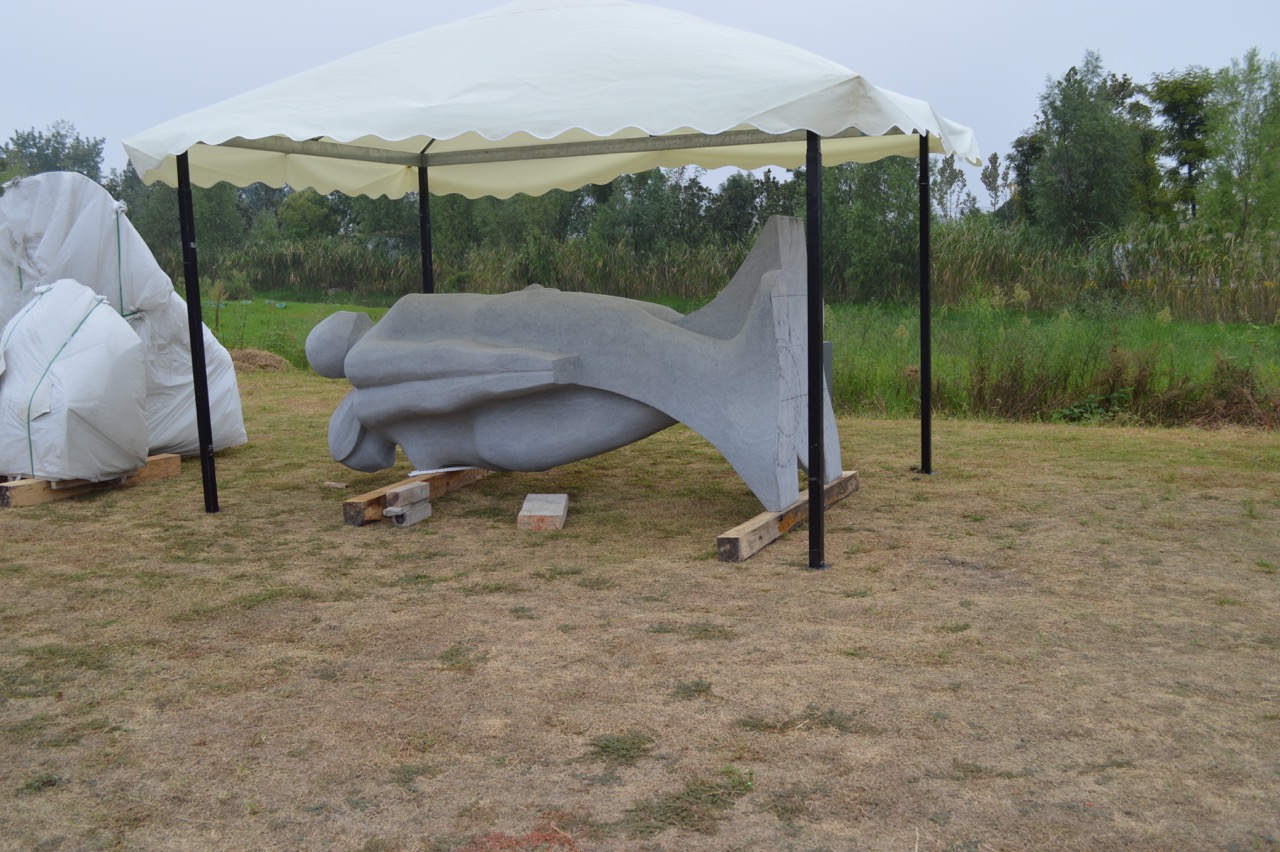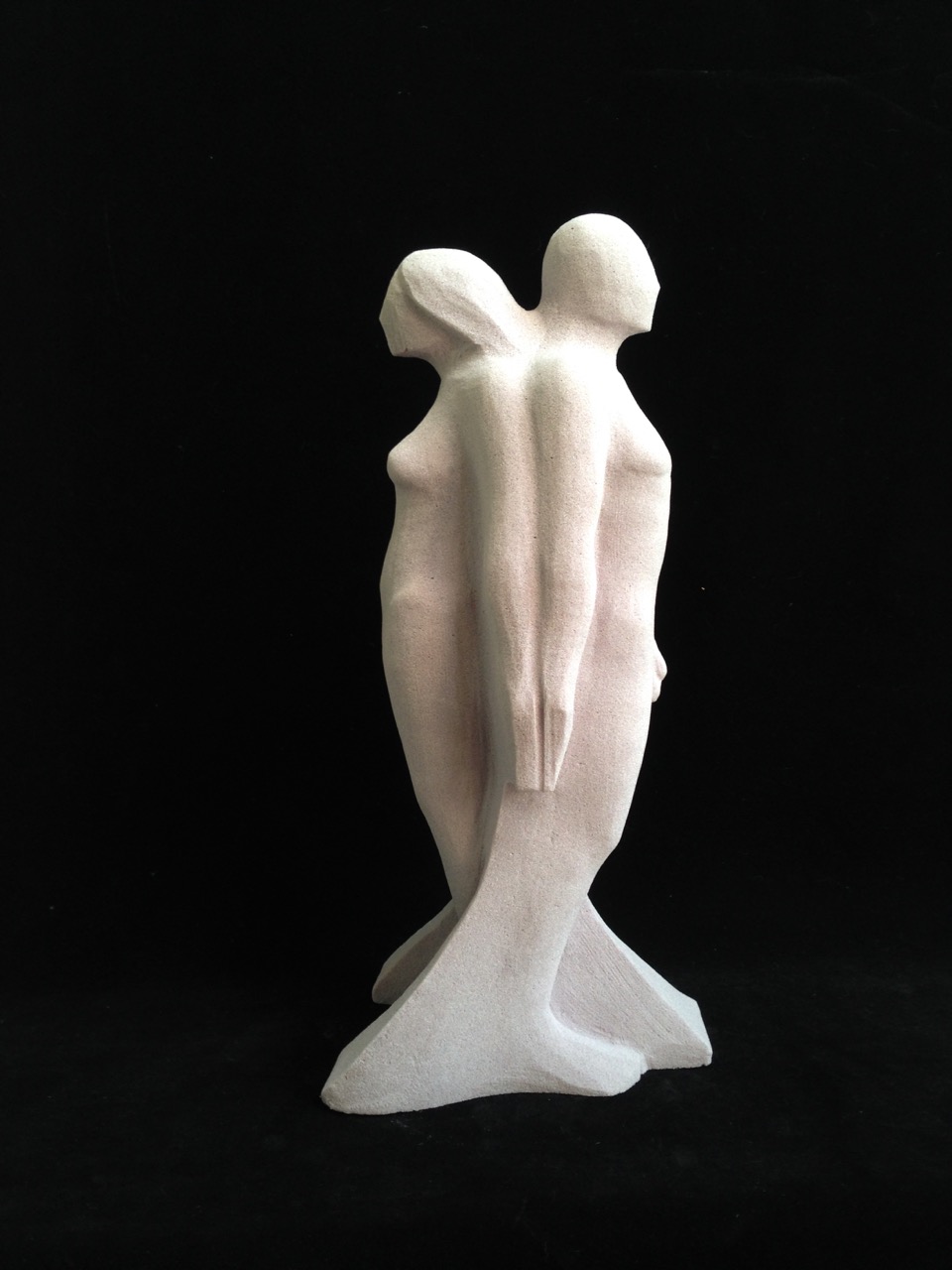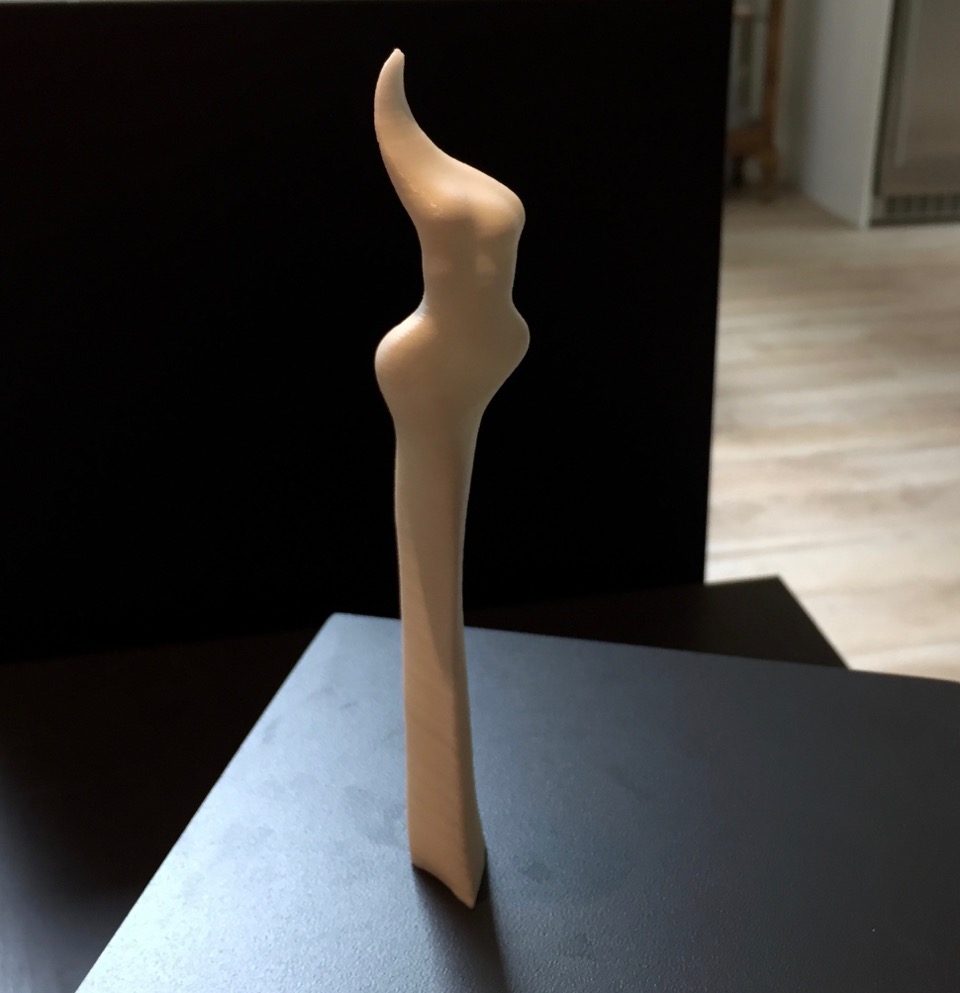 by Michael Binkley
by Michael BinkleyFor 34 years, I was a sculptor who worked exclusively as a direct subtractive carver, meaning I did not create a model of my composition and then copy it to stone. I’ve been inspired by the shape of a stone, its colours and patterning to create a sculpture. Each of my sculptures has been one-of-a-kind and I’ve developed a reputation with my collectors that only my hands have touched each sculpture and worked it from start to finish.
Most of us in the NWSSA work this way, but it is not how the sculptors credited with stone creations have worked in the past.
Most sculptors in history, created a maquette of a composition in a malleable material, made any adjustments desired, then either copied it in stone themselves or had it done by a craftsperson. Many sculptors in history who have been credited with carving their stone works have never even picked up a chisel. The final stone version of their creations was carved by a craftsperson, while the artist directed like a symphony conductor. These craftspeople have been trained to use mechanical devises to exactly copy from an artist’s maquette to stone. This has been the backbone of the sculpture industry in Italy for hundreds of years. So the craftsperson, or artigiano in Italian, has been essentially a human robot who copies the artist’s idea from one media to another.
An interesting aspect to this is that most craftspeople cannot create an original sculpture themselves. I experienced this firsthand on my first sojourn to carve in Italy at Studio SEM in Pietrasanta. On the second day of my life-size female nude carve, Davide tapped me on the shoulder and asked where my model was. I told him it was in my head, that I was working from my imagination. Tilting his head like a dog hearing a high whistle told me he was confounded that this crazy Canadian would jeopardize a large block of marble without knowing exactly where the tip of her nose, her elbows, her knees and toes were. His job was to copy artist’s maquettes into marble, but he was not able to imagine an original composition.
But that is how I’ve always worked - until 2014 when I was invited to participate and represent Canada at the inaugural Changsha International Sculpture Symposium in China.
 By force, I had to work the old-fashioned way. I was instructed to send a maquette of my sculpture concept to Changsha two months in advance so that the organizers could pre-work my granite sculpture in order to ease my workload once I arrived. Not having too much experience making models, I created mine at 1/4 scale from high density modelling foam and reinforced it with a layer of aerosol applied plastic. Fearing plagiarism, I sent my model 80% complete.
By force, I had to work the old-fashioned way. I was instructed to send a maquette of my sculpture concept to Changsha two months in advance so that the organizers could pre-work my granite sculpture in order to ease my workload once I arrived. Not having too much experience making models, I created mine at 1/4 scale from high density modelling foam and reinforced it with a layer of aerosol applied plastic. Fearing plagiarism, I sent my model 80% complete.When I arrived in China, I was greeted with a 12 foot tall granite sculpture EXACTLY as my model. You could even see my thumb strokes that I had left on the maquette! I could not get a definitive answer as to whether my piece was worked to this point my machine or by humans. I believe they thought my model was a completed version, but over the 45 days of the Symposium, I had the great pleasure of carving the fun part of the sculpture - the last 20%. I thought, “This is a little bit of alright….”
Concurrently, I met the talented sculptor, Cicero D’Avila, who represented Brazil. Cicero was deep into designing his sculptures virtually on the computer, using a program called ZBrush. He was then sending the virtual file to a CNC robot to have the sculpture either carved in marble, or to make molds for bronze casting.
These two aspects of the Symposium got me thinking differently about my approach to stone carving. I was fascinated and wanted to learn more.
I had been introduced to ZBrush by Larry Sinitsin about 10 years ago, but he was having great difficulty getting his virtual files translated so his CNC machine could read them to carve. That dissuaded me from the process then, but now the technology has advanced to solve this problem. So this year, I bought ZBrush (and a new computer, as my old one was too slow to run the program - sheesh!) and I’ve been teaching myself how to use it. ZBrush is only one of many 3D sculpting programs available. There are no standalone brick and mortar classes available locally to teach me, but thankfully there’s lots of online support. I have to admit, the learning curve is steep, but I am amazed at what this program can do.
My interest in this 3D virtual sculpting is many-faceted, and I’m interested to see how it will change my workflow. Already I am spending studio time at the computer, designing sculptures in a clean, quiet environment. I don’t have to don grubby work clothes and personal safety protection and go into my dusty studio to realize a sculpture!
I have mentioned the first benefit above: to have an assistant do much of the preliminary boring grunt work of any given carve. Whether it is a small, medium or large sculpture, after almost 40 years, I find the most satisfying part of a sculpture creation is the last 20%. With ZBrush, I can create a sculpture in virtual 3D and check it by having it 3D printed in plastic for a nominal fee. If it looks good, I can then rework the 3D file to add 20% and then send the virtual file and the new plastic model to a stone carving facility to have it translated (copied) into stone. Whether that facility employs humans, as has been the norm in Italy for centuries, or CNC robots, I feel the result is the same. When the 80% carved stone is delivered to my studio, I can then complete the sculpture, working in my own hand and style to ensure the “Binkley touch.” I believe this will enable me to increase my production capacity.

I also think there is a benefit to creating multiple versions of a sculpture. I have a notion to create a large original version of a sculpture, perhaps in fine Italian marble and then offer a limited edition series of smaller ones in either marble or another medium. The large original could fetch a handsome dollar, while the limited edition smaller pieces would fetch a lower price. This is akin to the painter offering gicleé prints of an original painting. This way, one composition could realize multiple incomes streams.
Similarly, I can create a 3D virtual composition and adjust it to create a series based on a theme. I’ve already explored this with my “Rubenesque” figures of generously proportioned nudes in humorous situations. I could expand this idea using ZBrush as a faster method.
I do concede that one major drawback to this methodology is the design of a sculpture relies on a monochromatic stone. This is a predominant reason why so many artists in history have worked in Carrara marble, or grey granite or limestone. The material is almost unimportant compared to the composition. This is in contrast to us who like to be inspired by the colour patterns and raw shape of a stone to guide us to a composition.
I was asked to make a presentation at Suttle Lake this past August on my ZBrush work so far, along with Carl Nelson’s presentation on CNC machines. These generated an interesting discussion amongst the attendees. Does the idea of 3D virtual sculpting appeal to you?

